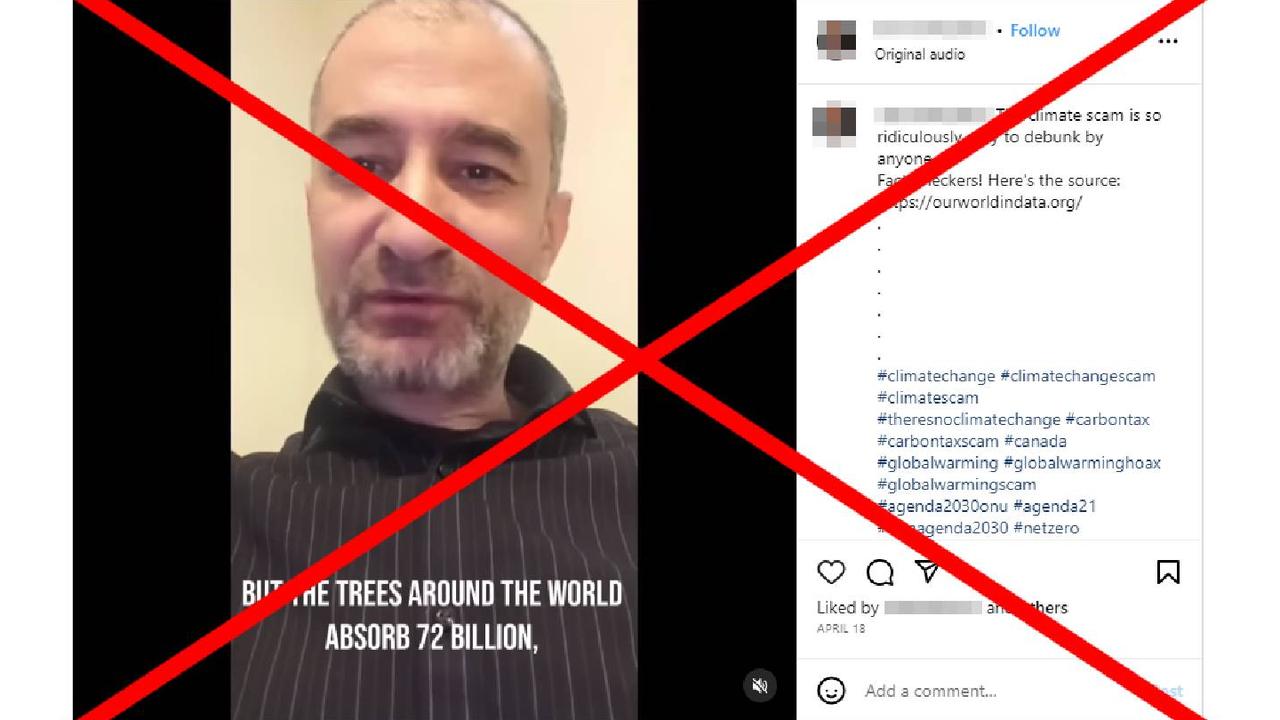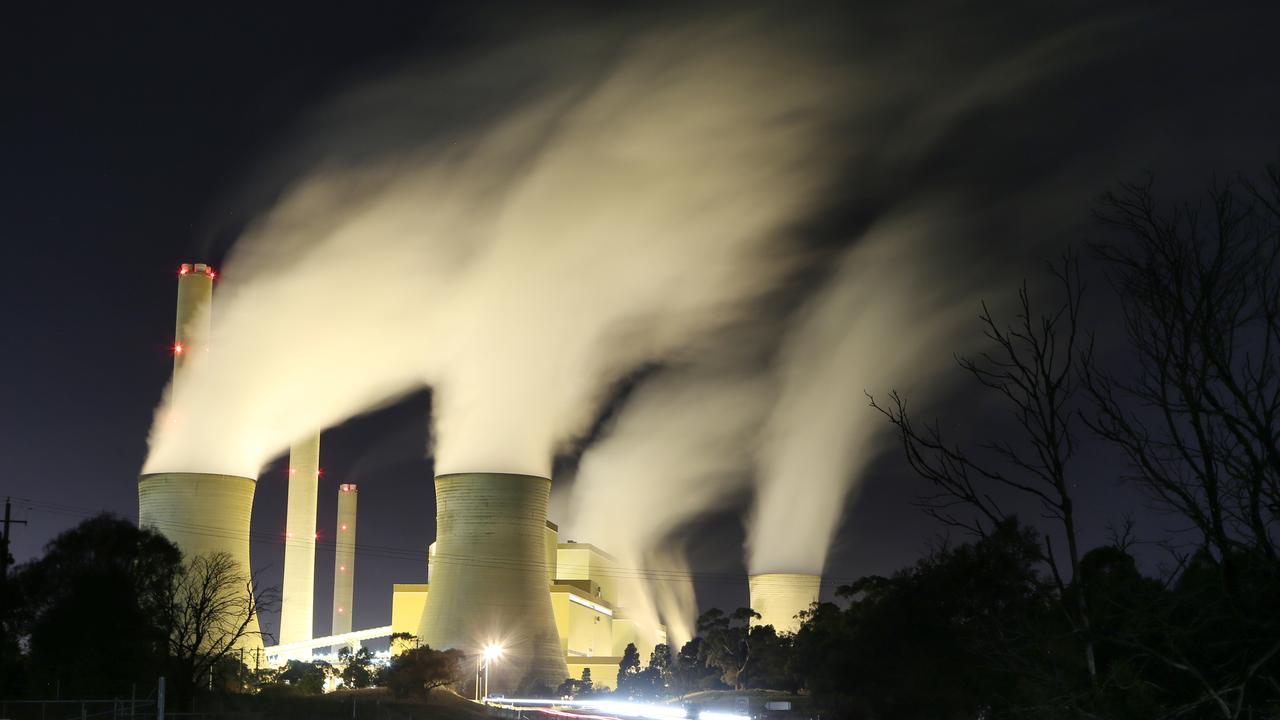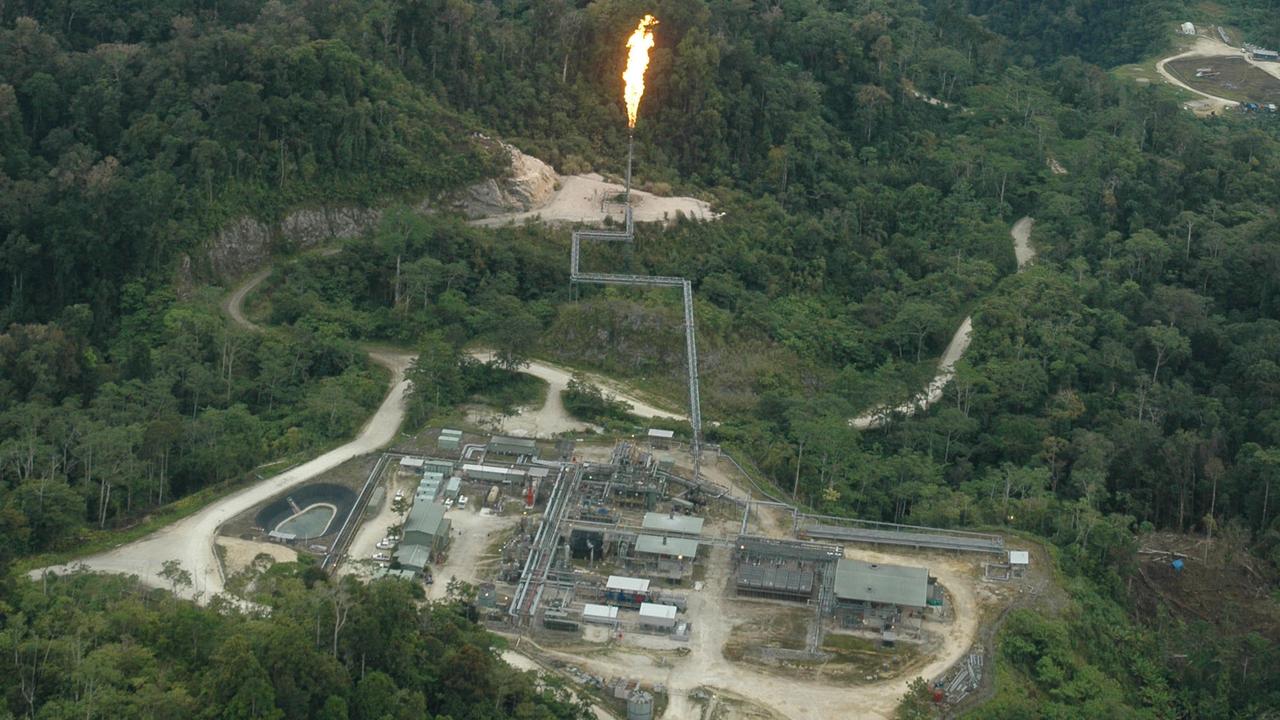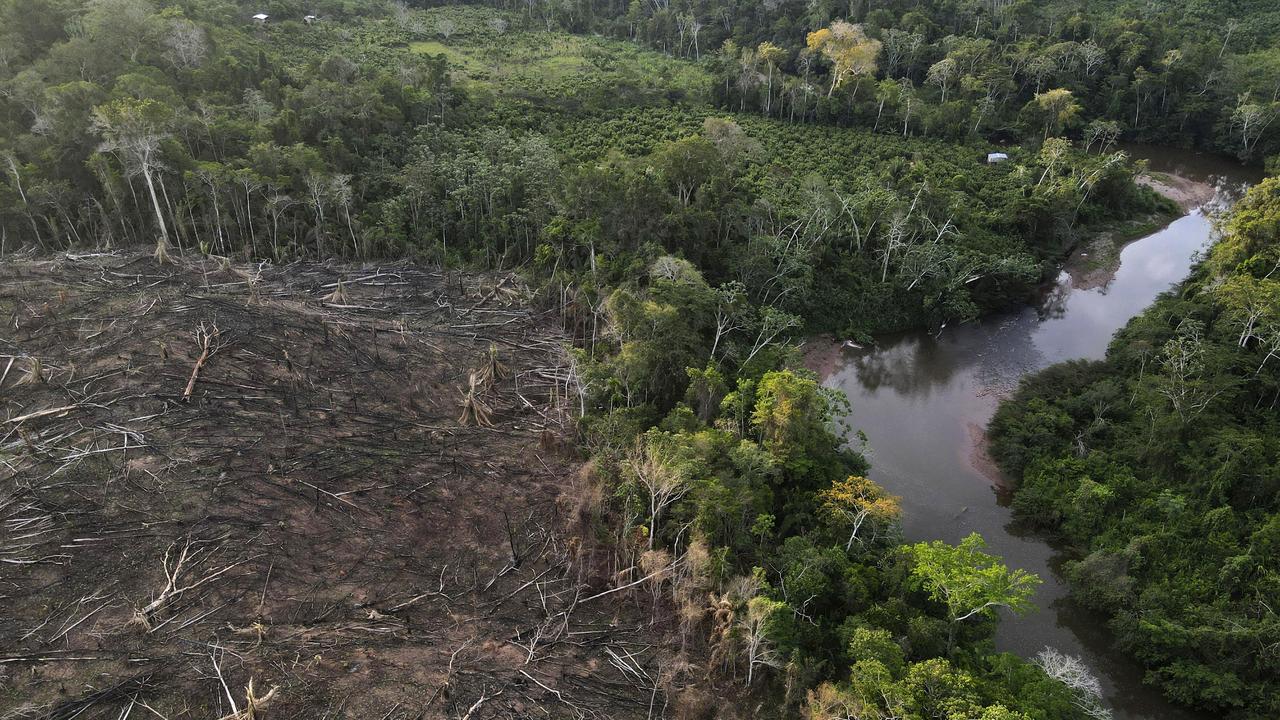WHAT WAS CLAIMED
The world’s trees absorb more than twice the amount of CO2 emitted.
OUR VERDICT
False. All of the world's natural CO2 sinks combined absorb around half of our carbon emissions.
An Instagram post claims there is "no climate change" because the world's trees absorb twice the about of carbon dioxide emitted by humans each year.
Experts say the claim is based on a false estimate of the amount of CO2 trees can absorb, and it also misunderstands the forest carbon cycle.
The post (archived here) claims the "climate scam" is "easy to debunk" by calculating the number of trees in the world and the amount of CO2 they are able to absorb, to give a gross figure that is almost double the amount of carbon emitted.
The man in the video cites Our World in Data as the source of his figures.

"There's an estimate of three trillion trees around the world," he says in the video.
"The worldwide CO2 emission is at 37 billion tonnes. But the trees around the world absorb 72 billion, almost 73 billion tonnes of CO2, which means the trees around the world have the capacity to absorb twice as much carbon emission.
"Wake up. There's no CO2 problem, there's no carbon emission problem, there's no climate change."
It's accurate that there are roughly three trillion trees. The scientific journal Nature published a research paper in 2015 that calculated the total number to be about 3.04 trillion.
It's also roughly accurate to say the average annual carbon emissions from human activity is about 35 billion tonnes. The US National Oceanic and Atmospheric Administration (NOAA) has estimated a similar total on its climate website.
The most recent Global Carbon Budget also approximates annual carbon emissions to be about 36.3 billion tonnes plus or minus 1.8 billion tonnes, according to Future Earth, a research organisation supported by UNESCO, the UN Environment Programme, the International Science Council, and the Belmont Forum.

However, the claim that three trillion trees absorb 72 billion tonnes of CO2 is not backed up by scientific evidence.
The US NOAA's aforementioned climate website states natural carbon sinks such as trees and oceans absorbed about half of the annual emissions from human activity between 2011-2020.
"Because we put more carbon dioxide into the atmosphere than natural processes can remove, the amount of carbon dioxide in the atmosphere increases every year," the NOAA website says.
"The more we overshoot what natural processes can remove in a given year, the faster the atmospheric concentration of carbon dioxide rises."
CSIRO chief research scientist Dr Pep Canadell says the estimated amount of carbon absorbed by carbon sinks is based on millions of observations of carbon fluxes and stocks on land, ocean and atmosphere.
"Scientifically, the following is super well established, with no uncertainties in saying that all natural CO2 sinks, including forest, other vegetation and the oceans, absorb about half of all CO2 emissions coming from the combustion of fossil fuels and deforestation," Dr Canadell told AAP FactCheck in an email.

Dr Sara Kuebbing, a scientist at the Yale School of the EnvironmentYale School of the Environment, says a recent paper in Nature estimates that global forests absorbed about 15.6 billion tonnes of CO2 each year on average between 2001-2019.
That's about 22 billion tonnes short of removing the annual CO2 emissions from human activity.
"The number isn't double the fossil fuel emissions and it's even lower than it could be because of forest loss and disturbance," Dr Kuebbing told AAP FactCheck in an email.
She pointed out that the estimated 37 billion tonnes of anthropogenic CO2 emissions per year is for fossil fuel emissions alone, and doesn't include emissions from land use change or other sources.
Dr Kuebbing also said the Instagram post oversimplified the forest carbon cycle and didn't present the full picture of what's happening with forests globally.
"Trees do sequester CO2, but trees (living in forests) also emit CO2 when the forests are disturbed or destroyed," Dr Kuebbing said.
"And, unfortunately, humans are still causing a lot of forest destruction and disturbance … We are losing trees around the world at a faster rate than we are replanting them.
"This means that we don't have a trillion trees each year of this equation, we (have) a trillion trees less the total number of trees lost in that year owing to human activity."
She said the Nature paper also estimated that 15 billion trees are cut down each year.

Dr Canadell agreed about the complexities of the forest carbon cycle, saying most of the CO2 absorbed by plants was released back into the atmosphere via plant and soil respiration.
In contrast, he said the emissions from human activity are constant and move in one direction, from the land to the atmosphere, "where half of it accumulates there and leads to climate change".
He added. "To fix the climate problem we cannot use the sinks that already exist … we need to do something additional including reducing emissions and creating new CO2 sinks."
A similar claim was debunked by AAP FactCheck last year.
The Verdict
The claim that the world's trees absorb more than twice the amount of C02 emitted by human activity is wrong on multiple fronts, according to experts.
Natural carbon sinks such as trees and oceans only absorb about half of the carbon emissions humans create each year. Additionally, the figures relied upon in the claim only refer to fossil fuel pollution, not all human-induced carbon emissions.
The claim also fails to take into account changing tree cover and the fluctuations in the complex forest carbon cycle.
False — the claim is inaccurate.
AAP FactCheck is an accredited member of the International Fact-Checking Network. To keep up with our latest fact checks, follow us on Facebook, Twitter and Instagram.












